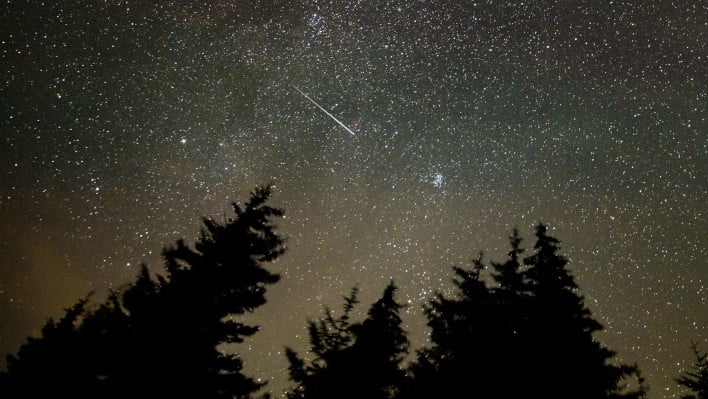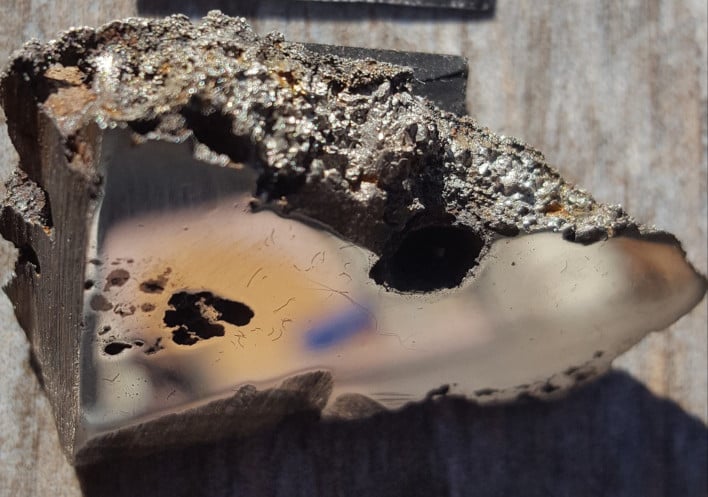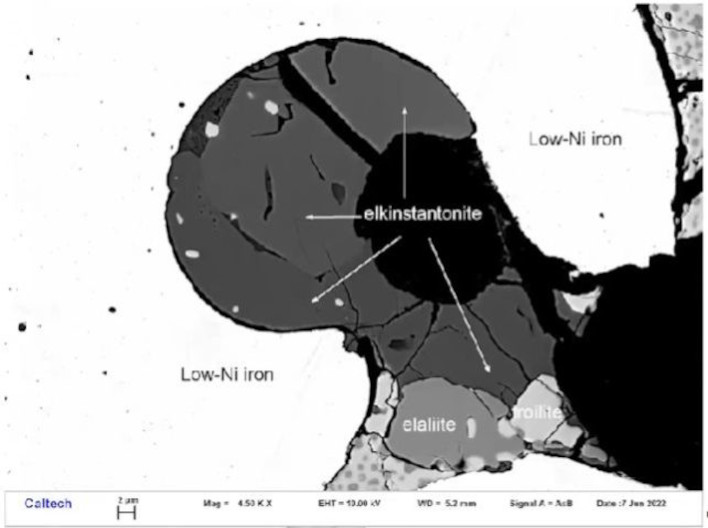Scientists Carve A 15-Ton Meteorite That Crashed Into Earth And Are Stunned At What's Inside

Skywatchers love watching falling stars light up the night sky. Most burn up as they enter Earth's atmosphere and never make it to impact. However, there have been some that have made the journey, and later found. One of those was found in Somalia, called El Ali. El Ali was located lying on top of the soil in a limestone valley where camels forage. Now, a slice of this mammoth meteorite has provided some fascinating findings.
El Ali has actually been on Earth for quite some time. The rock laid in a field for at least 5-7 generations, and was known to the locals as "Nightfall". It was eventually found by some prospectors in the area who were curious when they hit the boulder with a hammer. Eventually, a sample was taken using a sledgehammer and chisel and sent to Nairobi, Kenya for further analysis. Since then it has been sliced and sent to various locations for further research, with one of the slices sent to the University of Alberta.
"Whenever you find a new mineral, it means that the actual geological conditions, the chemistry of the rock, was different than what's been found before," stated Chris Herd, a professor in the Department of Earth and Atmospheric Sciences and curator of the University of Alberta's Meteorite Collection. "That's what makes this exciting: In this particular meteorite you have two officially described minerals that are new to science."

The two new minerals are known as elaliite, after the town of El Ali where it was found, and elkinstantonite, after Lindy Elkins-Tanton, vice president of the ASU Interplanetary Initiative and professor at Arizona State University's School of Earth and Space Exploration.

It didn't take long after receiving the slice to recognize there were at least two new minerals within it. Herd brought in Andrew Locock, head of the University of Alberta's Electron Microphobe Laboratory, who quickly identified two of the minerals as being new.
Locock was able to identify the two minerals, because they had been synthetically created before. This made it possible "to match the composition of the newly discovered natural minerals with their human-made counterparts."
Since the university received the slice of El Ali, it has been reported that the large rock has been moved to China in search of a buyer. It is uncertain whether any new samples will be available for scientific purposes.

